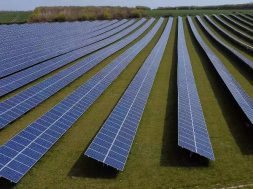
Solar Cell Printing – The Power Of Sun Now In Your Hands !
The solar energy industry is a fast growing industry. With the increase in demand across developed and developing countries, China and United States have started manufacturing solar modules in huge quantities and dumping it in growing economies.
Researchers at Oxford University have predicted that the cost of solar panel will fall by 10% a year. This is mainly due to improvement in the efficiency of solar panels. Also, the invention of new solar cells such as the thin film technology, organic solar cell, Gallium arsenide cell, Cadmium telluride cell is helping us use solar energy for diverse applications.
Despite these developments, there are many hurdles for successful implementation of solar power plants. The major of these problems are non-availability of land, high cost involved in transportation, handling, and installation of these bulky panels, lack of proper evacuation infrastructure in remote areas, etc. Silicon-based solar cells continue to hold the major share in solar cell market. Though silicon is abundant and cheap, the process of converting them into wafer is costly.
One of the major technological breakthroughs in solar field is the invention of printable solar cells. This technology enables the production of thin, flexible solar cells based on the printable solar ink. Printable solar cells along with conventional silicon solar cells can power the solar dreams of the developing countries. Technically it is called inkjet solar cells.
Ink such as CIGS (Cadmium Indium Gallium Selenide) is used for printing. These can go a long way in low power applications such as mobile phones and laptops. These solar cells are lightweight, portable and very much cheaper than silicon cells.
A bunch of Australian materials scientists from CSIRO, Monash University and the University of Melbourne had worked on the technology for over seven years from 2007 and have figured out a way to cheaply print the panels onto plastic. The inkjet solar cells are fabricated by using an inkjet printer which prints solar ink onto a solar cell substrate similar to the way the plastic bank notes are printed. Solar ink can be printed onto paper-thin, flexible plastics, as well as onto steel or can be made semi-transparent for building cladding and windows.
The printed solar cell sheets can be easily carried to remote places like hills or deserts. They can be integrated into a wide range of objects such as windows, doors, walls, curtains and almost anywhere, wherever sunlight falls. They can also be printed on plastics in smartphone or laptops which allows self-charging. They can be easily connected just like a battery is connected.
Inkjet cells can be printed on exposed building components such as facades and windows, whereas conventional systems can be put up only on flat surfaces such as the rooftop. This promotes the concept of Net Zero Energy buildings. Also, printed solar cells come at a very low cost when compared to silicon-based cells.This has the potential to further reduce the cost of solar energy bringing it on par with conventional energy.
Some of the limitations of these cells are that they have achieved an efficiency of only 10% whereas commercial conventional cells offer up to 25%. They have a lifespan of only about six months. Also, though the cells are cheap, the inkjet printer is costly and requires maintenance.
Researchers are trying to make them more efficient, durable and weather-resistant before releasing them into a larger market. As technology advances, very soon we could achieve the goal of clean energy for all.













